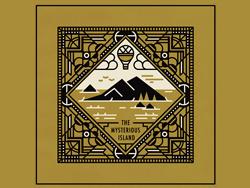Coffee beans picking year Brand recommended species Flavor description taste producing area
Coffee beans picking year Brand recommended species Flavor description taste producing area
Coffee trees can be divided into two main varieties: Arabica (Arabica) and Robusta (Robusta).
There are also some minor species, such as the Liberian species (Liberica) and the Alabasta species (Arabusta), but they are rare on the market.
Although Arabica and Roberta are widely cultivated, there are significant differences between them. Beans are different and tree species are not the same. Therefore, their use is also different. The world's production of Arabica beans is about 70%, while Robosta and others account for 30%.
Arabica
Arabica has a variety of tastes and acidity, high acidity, less caffeine, red color, less oil, can only grow above 800 meters above sea level, strong aroma, and a variety of different flavors, taste more pure, taste lubrication, chocolate, vanilla and nutty flavor. This kind of coffee is used in the best coffee shops in the world, and experts believe that the quality of this kind of coffee depends on the reasonable blending of bean seeds. Brazil is the largest growing country of Arabica beans, followed by Colombia and India.
Robusta
The flavor of Robusta is more bitter than that of Arabica, and its quality is much lower, so it is mostly used to make instant coffee. In general, the coffee sold in fast food restaurants mainly uses Robusta coffee beans as the material. Because it is made in Africa, most Africans drink robusta coffee. It has strong resistance to disease and high yield, accounting for less than 30% of the world's total coffee production. Robusta has low acidity, high caffeine content, brown color, thick fat and less flavor than Arabica, which can increase the taste and gelatinous taste of coffee.
Liberian coffee trees account for less than 5% of the world's output. Liberian coffee trees are suitable for planting in the lowlands, and the coffee beans produced are highly fragrant and bitter.
The second step: raw bean treatment
The treatment methods of raw coffee beans can be divided into natural sun method, water washing method, natural water washing method and honey treatment method. Different treatment methods also have an effect on the flavor of coffee.

Important Notice :
前街咖啡 FrontStreet Coffee has moved to new addredd:
FrontStreet Coffee Address: 315,Donghua East Road,GuangZhou
Tel:020 38364473
- Prev

Flavor description of coffee and bean honey treatment taste grinding scale variety production area
Coffee and bean honey treatment flavor description taste grinding scale variety production area 1. Skin/Pulp: the outermost layer of coffee beans is covered with berry-like skin and pulp. In addition to the natural sun method, coffee beans treated by other methods must remove the skin and flesh within a few hours after picking. For coffee, peel and pulp are important by-products. In some industries
- Next

Characteristics and flavors of three main coffee bean producing areas describe the historical story of the spread of coffee bean varieties
Description of Flavor and Flavor of Coffee beans in three producing areas Coffee in Yunnan was planted on a large scale in the mid-1950s, with a scale of 4000 hectares. By the end of 1997, the planting area of coffee in the province had reached 7800 hectares. At present, the planting area of the province accounts for 70% of the national area, and the output accounts for 83% of the country's total. Whether in terms of planting area and coffee bean production, Yunnan Province
Related
- Guji coffee producing area of Guji, Ethiopia: Humbela, Shakiso, Wulaga
- What is the most expensive variety of Qiloso in BOP multi-variety group?
- How to store the coffee beans bought home?
- Why are Yemeni coffee beans so rare now?
- Ethiopian Sidamo all Red Fruit Sun Sun Santa Vini Coffee beans
- SOE is mostly sour? What does it mean? Is it a single bean? what's the difference between it and Italian blending?
- Is Italian coffee beans suitable for making hand-brewed coffee?
- How to choose coffee beans when making cold coffee? What kind of coffee beans are suitable for making cold coffee?
- Just entered the pit to make coffee, what kind of coffee beans should be chosen?
- Can only Japan buy real Blue Mountain Coffee? What are authentic Jamaican Blue Mountain coffee beans?

